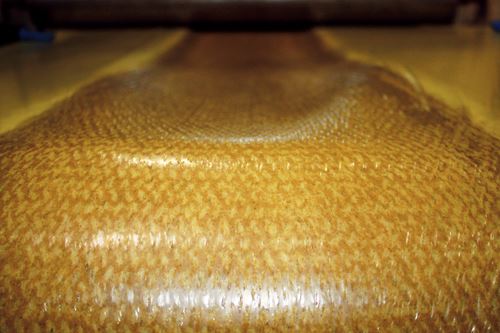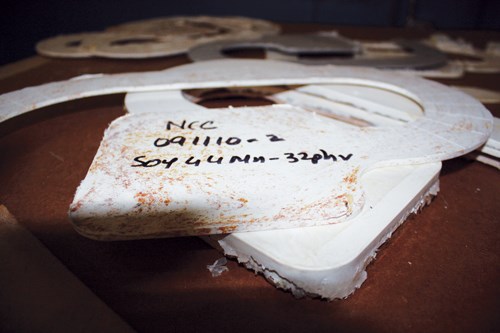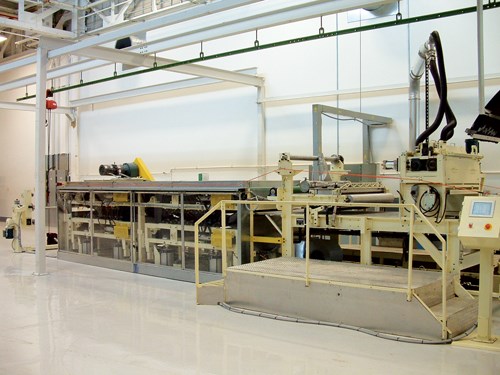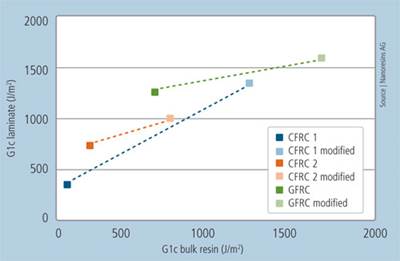Bio-based fillers: Reducing SMC mass
The Bio-Lite Technical Center of Excellence at the National Composites Center (Dayton, Ohio) is developing sheet molding compound (SMC) recipes capable of yielding finished parts with specific gravity as low as 1.2.
Sheet molding compound (SMC) has long had a home in a variety of automotive composites applications — to the tune of about 325 million lb (about 147,420 metric tonnes) per year in the U.S. alone. Applications include exterior body panels, including front and rear fenders, hoods, doors and decklids, as well as trunk floor/spare tire wells and other secondary support structures.
A perennial issue with SMC, however, has been its weight efficiency. Conventional formulations in use today range in specific density from 1.5 to 1.9 or more. There are a number of efforts underway to drastically reduce SMC’s specific gravity, and thereby, its mass, through the use of bio-based materials.
The Bio-Lite Technical Center of Excellence at the National Composite Center (NCC, Dayton, Ohio) is in the midst of a two-year effort to develop optimized SMC recipes that, the Center hopes, will be capable of yielding finished parts with a specific gravity as low as 1.2. As part of that program, the Center is conducting research on several “green” materials technologies that it expects will help manufacturers reduce material weight in automotive composites.
One area of study is centered on fillers. Although several powdered minerals are widely used as filler in SMC — including talc, limestone and calcium carbonate — the most used is the latter, which accounts for 55 percent of the SMC filler market. Therefore, the Center has focused recent efforts on finding a bio-based replacement for calcium carbonate. The goal of this phase of research is to find a bio-based material that will reduce finished part weight by as much as 30 percent.
Leading the research is NCC scientist Dr. Rujul Mehta. He reports that the Center is currently assessing soybean meal, corn-based solids, rice husks, kenaf, silica platelets and recycled cellulose, with special attention paid to soybean meal. (The Center’s research is sponsored, in part, by the United Soybean Board, Chesterfield, Mo.).
Early results are encouraging, Mehta says, noting that, to date, the center has demonstrated potential weight savings with soy-based filler of about 30 percent in a polyester-based SMC. Another test of soy, cellulose and kenaf fillers demonstrated a 22 to 36 percent reduction in specific gravity compared to calcium carbonate. Because of the specific gravity reduction, he says, the center can replace calcium carbonate volume-for-volume, rather than weight-for-weight. This, says Mehta, allows filler loading to be selected independent of final density considerations.
Some technical challenges remain, however. The water take-up of SMC with soy-based filler is about 5 percent, compared to less than 1 percent for SMC with calcium carbonate. Mehta also says that elastic modulus of calcium carbonate-filled SMC is 14 GPa vs. 10 GPa for soy-filled SMC. Similarly, tensile strength drops from 85 GPa to 79 GPa, and apparent shear strength drops from 19 MPa to 18 MPa. Mehta says sizing agents are being evaluated as a way to recover some of the lost modulus.
Mehta reports that real-world automotive applications based on the Center’s research are already in the works and should come to light early this year.
Related Content
Materials & Processes: Fibers for composites
The structural properties of composite materials are derived primarily from the fiber reinforcement. Fiber types, their manufacture, their uses and the end-market applications in which they find most use are described.
Read MorePEEK vs. PEKK vs. PAEK and continuous compression molding
Suppliers of thermoplastics and carbon fiber chime in regarding PEEK vs. PEKK, and now PAEK, as well as in-situ consolidation — the supply chain for thermoplastic tape composites continues to evolve.
Read MoreThe making of carbon fiber
A look at the process by which precursor becomes carbon fiber through a careful (and mostly proprietary) manipulation of temperature and tension.
Read MoreMaterials & Processes: Resin matrices for composites
The matrix binds the fiber reinforcement, gives the composite component its shape and determines its surface quality. A composite matrix may be a polymer, ceramic, metal or carbon. Here’s a guide to selection.
Read MoreRead Next
Resin systems update: The greening of thermosets
Thermoset resin formulators seek environmental benefits as customers demand reduced cost and increased performance.
Read MoreComposites end markets: Energy (2024)
Composites are used widely in oil/gas, wind and other renewable energy applications. Despite market challenges, growth potential and innovation for composites continue.
Read MoreCW’s 2024 Top Shops survey offers new approach to benchmarking
Respondents that complete the survey by April 30, 2024, have the chance to be recognized as an honoree.
Read More




























